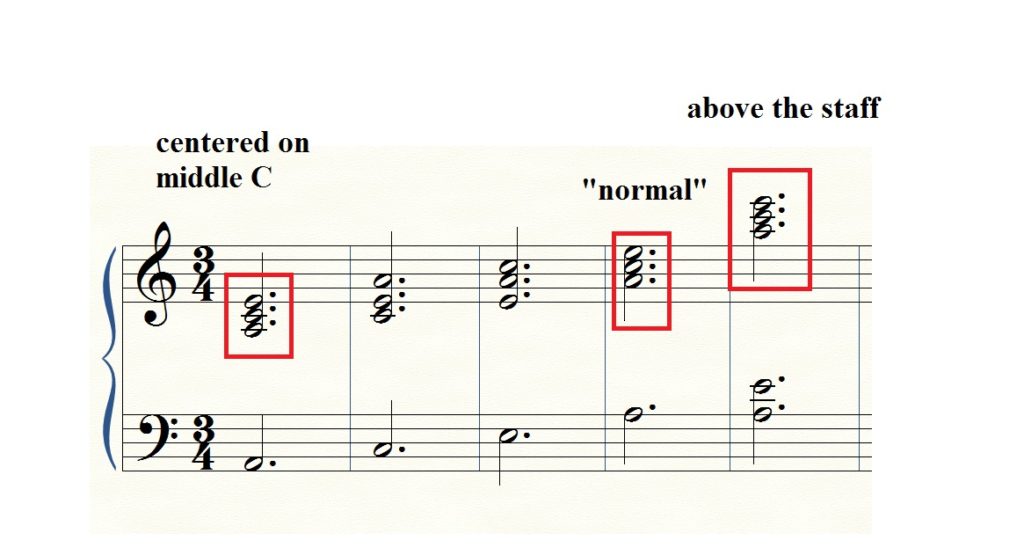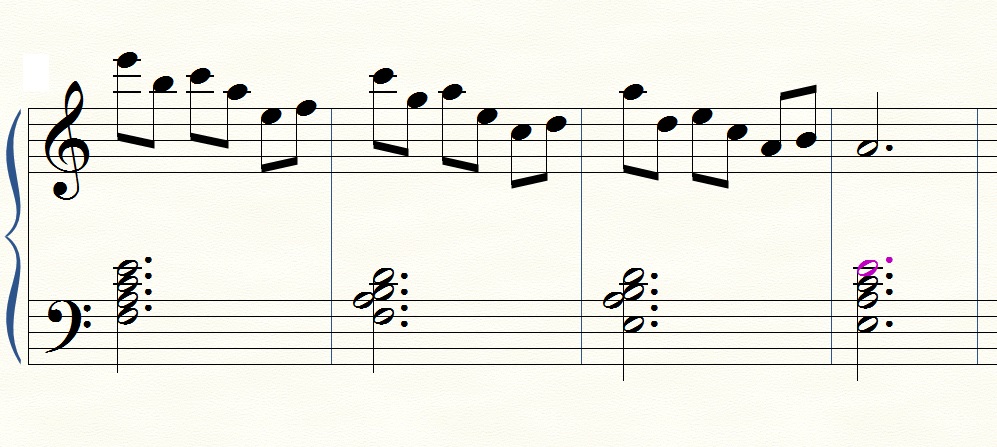This morning was Random Note assignment # 298. One of the chords was a C diminished (which I insist on spelling C Eb F# A ). I was trying to figure out how to connect this chord with another one in the group, and then outside the window I heard a faint warbling whistle at the birdfeeder. “Old…Sam…Peabody Peabody Peabody”.
F# F# Bb Bb Bb Bb Bb Bb Bb Bb Bb
I made use of that suggestion to build an Eb minor 6 chord C Eb F# Bb
Thank you, Old Sam!
I was a bit brain-spinny at the piano this morning. Here are some of the thoughts I scribbled onto my manuscript paper
- “I’m thinking about, when I get my 70 dice, I can toss them all at once! There will be some phrases that make sense. Put into Midinous, connect in interesting ways.”
- About revising music from 3 years ago. “I’m going to treat it as if a friend had written it and gave me a box of stuff to complete. My job is to carry on her vision of the piece.”
- “I have to balance: talking & writing ABOUT music vs actually making it”
- “Trying to play these into a recorder is difficult. I can’t read my own writing. I’ve forgotten the chords already”


